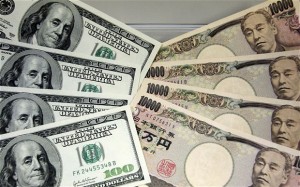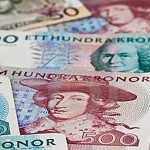 US dollar was losing ground against the Japanese yen on Thursday, after Bank of Japan (BoJ) maintained its unprecedented monetary stimulus at the policy meeting today, also reiterating that the rate of inflation in the country will almost reach the 2% inflation objective during the year starting on April 2015. At the same time, the Federal Reserve also maintained its monthly scale of asset purchases.
US dollar was losing ground against the Japanese yen on Thursday, after Bank of Japan (BoJ) maintained its unprecedented monetary stimulus at the policy meeting today, also reiterating that the rate of inflation in the country will almost reach the 2% inflation objective during the year starting on April 2015. At the same time, the Federal Reserve also maintained its monthly scale of asset purchases.
USD/JPY reached a session low at 98.23 at 7:35 GMT, after which consolidation followed at 98.30, losing 0.23% for the day. Support was likely to be received at October 22nd low, 97.85, while resistance was to be met at October 30th high, 98.66.
Bank of Japan kept its benchmark interest rate close to zero at the policy meeting today. Banks Governor Haruhiko Kuroda and his team pledged to increase nations monetary base by 60 trillion to 70 trillion JPY, or 711 billion USD per year, in a statement in Tokyo earlier on Thursday. He also reiterated that Japan was about to reach banks 2% inflation target, as economy is projected to expand at a faster pace than projected during the forecast period through March 2016. The average rate of inflation is expected to reach 1.9% during the 2015 fiscal year.
Japanese central bank said that the impact of the sales-tax increase upon economy was to be closely watched and in case policy adjustments are necessary, the bank will consider such. As far as core consumer prices, which exclude prices of fresh food, are concerned, board members projections point that the corresponding index will advance 1.3% during the year from April. Nations economy will probably expand 1.5% during the next fiscal year and the following year, according to the projections in the half-year outlook.
Kuroda expects that demand for Japanese automobiles and electronics will diminish in the upcoming months. BoJ Governor suggests that world economies will probably recover at a gradual rate, which may favor a boost in Japanese exports.
On the other hand, BoJ is to accelerate the pace of its stimulus program sometime between April and June next year in order to support domestic economy, following the increase in the sales tax, according to 20 out of 34 economists, surveyed by Bloomberg.
However, with the prices of consumer goods beginning to pick up the pace, the average labor cash earnings in Japan increased a mere 0.1% in September on annual basis, after falling 0.9% a month ago, while regular wages, which exclude overtime and bonuses, decreased 0.3% in September 2013 compared to September 2012, recording a 16th consecutive month of decline. Countrys economy is expected to shrink during the three months after the sales tax is increased, before returning to growth.
Meanwhile, US dollar received support after the Federal Reserve Bank decided to maintain the current pace of its asset purchases at its policy meeting yesterday, as widely anticipated, because more evidence of an improving economic activity was to be obtained. Fed Chairman Ben Bernanke continued to press with the unprecedented accommodative policy into the final months of his mandate, as he strives to safeguard economic expansion achieved in four years from the impact of October’s partial government shutdown.
The US central bank left without change its statement that it will probably maintain the benchmark interest rate close to zero at least as long as the rate of unemployment in the country is above 6.5% and as the inflation outlook is not exceeding 2.5%. Fed’s monthly purchases will remain divided between 40 billion USD of mortgage bonds and 45 billion USD in Treasury securities.
Elsewhere, the yen was climbing against the euro, with EUR/JPY pair tumbling 0.74% on a daily basis to trade at 134.24 at 9:18 GMT. GBP/JPY cross was also losing ground, down 0.34% to trade at 157.36 at 9:19 GMT.





